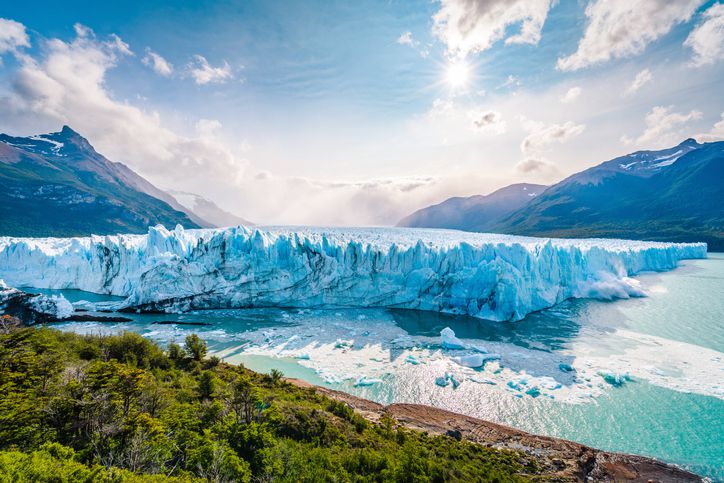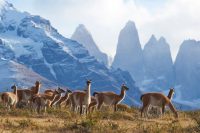
Glaciers in Argentina are spread over a length of about 3500 kilometers in the west of the country, more specifically in the Andes, and are spread over 12 provinces of the country.
90% of the earth’s freshwater is found in glacier areas, and after Antarctica and Greenland comes the “Los Glaciares” region, which is partly in Argentina and partly in Chile. Glaciers thus provide a large amount of meltwater, and play a key role in water supply. They are one of the most important strategic reserves of this natural resource in solid form.
Among other things, they contribute to reducing the impact of droughts, which is why they are increasingly the focus of conservationists and environmentalists, as well as national conservation programmes. In 2010, Argentina passed a law to protect glaciers. Besides climate change, mining companies are one of the biggest threats to the glaciers and their environment.
The glaciers are in danger
International scientists warn that most of the world’s 200,000 or so glaciers have lost more mass in the 21st century than at any time in history.
Between 2000 and 2019, the world’s glaciers lost an average of 267 billion tonnes of ice per year, or about 18 to 23 per cent of the observed sea-level rise.
Argentina is the first country in Latin America to pass a law to protect its glaciers. Among other things, the law stipulates that the glaciers must be preserved because they are a water reserve for consumption and agriculture and provide water to replenish rivers.
When did the glaciers in Patagonia form?
In southern Patagonia, the first glaciation took place about 3.5 million years ago. Another major glaciation took place about 1 million years ago.
In the early period of formation, the glaciers in the area of the mountain range reached a height of more than 1000 m above the present-day water level of the lake.
Los Glaciares National Park: a collection of glaciers in Argentina
Founded in 1937, the “Los Glaciares” National Park in Argentina owes its name to the numerous glaciers located in the park’s area. It is an area of outstanding natural beauty, with mountains, forests and numerous glacial lakes, including the 160 km long Lago Argentino, which is fed by the glaciers.
The national park is located on the border with Chile and, due to its scenic interest on the one hand and its endangered flora and fauna on the other, was declared a World Heritage Site by UNESCO in 1981.
The current ice cap and its glaciers are a small remnant of the last great ice age, which began 100,000 years ago and ended abruptly about 10,000 years ago.
Perito Moreno Glacier: the Eighth Wonder of the World
The Perito Moreno is one of the thirteen glaciers that make up Los Glaciares National Park, yet it is unique in that it is the only glacier in Patagonia that advances. A kind of icon among glaciers, it displays an imposing mass of ice surrounded by forests and mountains, and is considered the eighth wonder of the world thanks to its spectacular sight. Together with Puerto Madryn and the Iguazú Falls, Perito Moreno is one of the most visited places in the country, attracting around 500,000 tourists a year. They can get within a few hundred metres of the glacier’s tongues, go ice hiking or mini-trekking.
It covers an area of 250 km2, which is larger than the entire city of Buenos Aires. Although it may not look like it from the outside, the glacier is constantly in motion, the cyclical phenomenon of the glacier’s forward and backward movement of about 1.5 to 2 metres per day causing spectacular falls of the huge ice blocks into Lago Argentino. These falls of ice blocks from the huge front of the glacier, up to 60 metres high, are each unique and unrepeatable, making them an unforgettable experience for observers of this phenomenon.
For visitors touring the glacier region, there are countless opportunities to enjoy an incomparable natural landscape. Whether on foot, by car or by boat, there are many ways to explore this unique area in Argentina.
No comments yet
There are no comments on this post yet.




Leave a comment